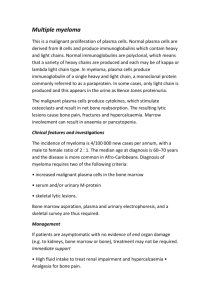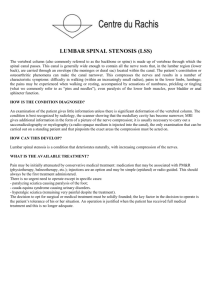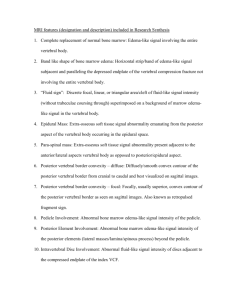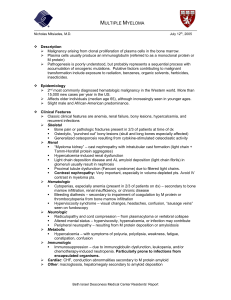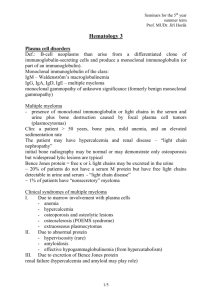Epidural multiple myeloma causing thoracic cord
advertisement
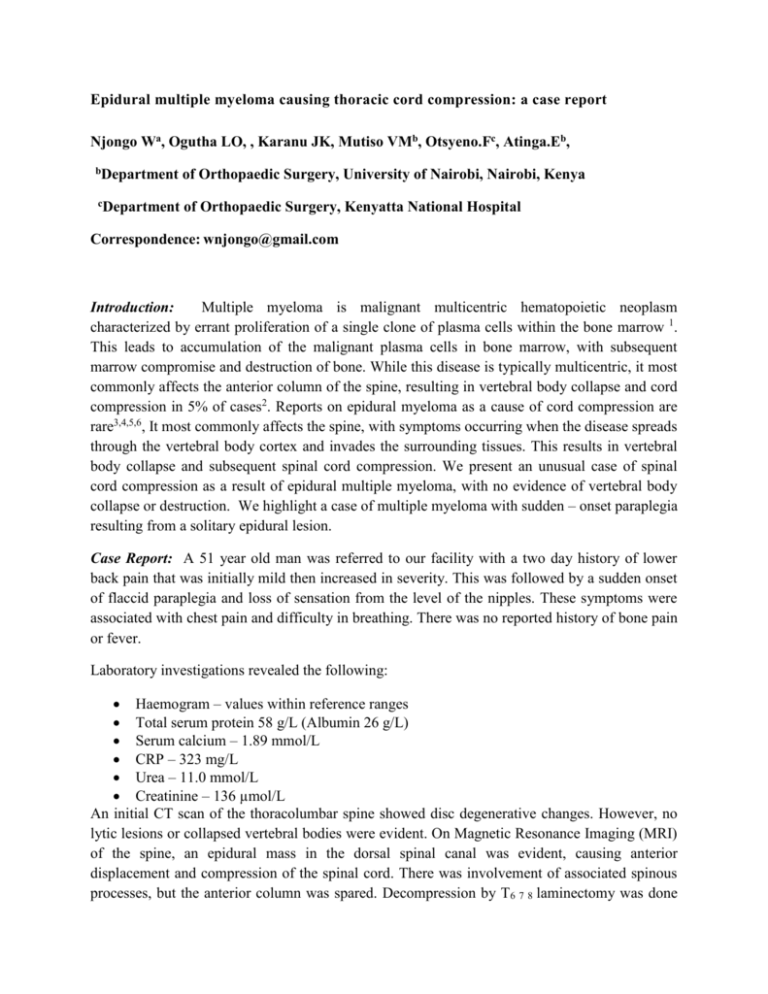
Epidural multiple myeloma causing thoracic cord compression: a case report Njongo Wa, Ogutha LO, , Karanu JK, Mutiso VMb, Otsyeno.Fc, Atinga.Eb, bDepartment of Orthopaedic Surgery, University of Nairobi, Nairobi, Kenya cDepartment of Orthopaedic Surgery, Kenyatta National Hospital Correspondence: wnjongo@gmail.com Introduction: Multiple myeloma is malignant multicentric hematopoietic neoplasm characterized by errant proliferation of a single clone of plasma cells within the bone marrow 1. This leads to accumulation of the malignant plasma cells in bone marrow, with subsequent marrow compromise and destruction of bone. While this disease is typically multicentric, it most commonly affects the anterior column of the spine, resulting in vertebral body collapse and cord compression in 5% of cases2. Reports on epidural myeloma as a cause of cord compression are rare3,4,5,6, It most commonly affects the spine, with symptoms occurring when the disease spreads through the vertebral body cortex and invades the surrounding tissues. This results in vertebral body collapse and subsequent spinal cord compression. We present an unusual case of spinal cord compression as a result of epidural multiple myeloma, with no evidence of vertebral body collapse or destruction. We highlight a case of multiple myeloma with sudden – onset paraplegia resulting from a solitary epidural lesion. Case Report: A 51 year old man was referred to our facility with a two day history of lower back pain that was initially mild then increased in severity. This was followed by a sudden onset of flaccid paraplegia and loss of sensation from the level of the nipples. These symptoms were associated with chest pain and difficulty in breathing. There was no reported history of bone pain or fever. Laboratory investigations revealed the following: Haemogram – values within reference ranges Total serum protein 58 g/L (Albumin 26 g/L) Serum calcium – 1.89 mmol/L CRP – 323 mg/L Urea – 11.0 mmol/L Creatinine – 136 µmol/L An initial CT scan of the thoracolumbar spine showed disc degenerative changes. However, no lytic lesions or collapsed vertebral bodies were evident. On Magnetic Resonance Imaging (MRI) of the spine, an epidural mass in the dorsal spinal canal was evident, causing anterior displacement and compression of the spinal cord. There was involvement of associated spinous processes, but the anterior column was spared. Decompression by T6 7 8 laminectomy was done and the mass was found to involve the associated spinous processes and paraspinal muscles. The excised tissue mass was sent for histopathological analysis. Sheets of malignant plasmacytoid cells were observed and a plasma cell malignancy diagnosed. Urine electrophoresis showed no Bence Jones proteinuria. A bone marrow aspirate showed malignant plasmacytoid cells comprising 28% of the bone marrow cells, a feature diagnostic of multiple myeloma.The patient is presently receiving radiotherapy.
